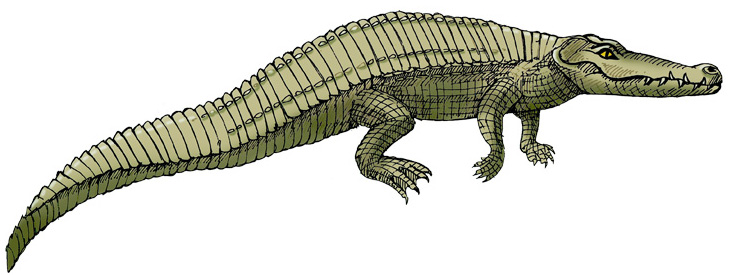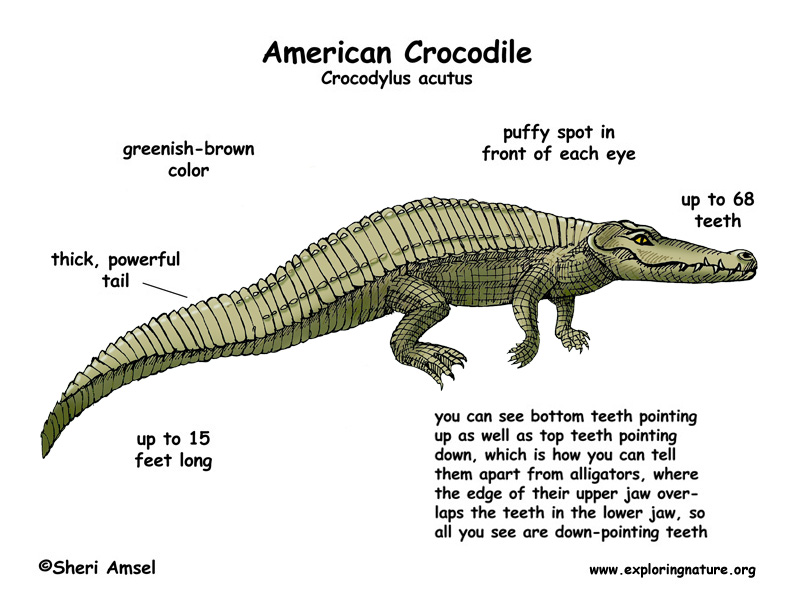

They are found in the southern U.S., Mexico, Central and South America.
They live in freshwater rivers, lakes and slightly salty (brackish) waters along the coast.
They are one of the largest crocodiles. Males reach up to 15 feet long. They are a greenish-brown color and they have a puffy spot in front of each eye. They have up to 68 teeth. In crocodiles you can see bottom teeth pointing up as well as top teeth pointing down, which is how you can tell them apart from alligators where the edge of their upper jaw overlaps the teeth in the lower jaw, so all you see are down-pointing teeth.
They build long burrows to rest in when weather is too cold or dry. They can go a long way across the land looking for a new water habitat.
They eat fish mostly, but also take turtles, crabs and birds. They feed mostly at night.
Young crocodiles are eaten by birds, wild cats, raccoons and large fish. The adult’s only predator is man.
Crocodiles nest in holes, but will build mound nests if it is too wet for a safe, dry hole nest. Females lay 30 – 60 eggs. They hatch after 3 months, just as rainy season begins. The females don’t spend much time caring for their young. The babies move off as soon as they can and fend for themselves.
Kingdom: Animalia
Phylum: Chordata
Class: Reptilia
Order: Crocodilia
Family: Crocodylidae
Genus: Crocodylus
Species: C. acutus
When you research information you must cite the reference. Citing for websites is different from citing from books, magazines and periodicals. The style of citing shown here is from the MLA Style Citations (Modern Language Association).
When citing a WEBSITE the general format is as follows.
Author Last Name, First Name(s). "Title: Subtitle of Part of Web Page, if appropriate." Title: Subtitle: Section of Page if appropriate. Sponsoring/Publishing Agency, If Given. Additional significant descriptive information. Date of Electronic Publication or other Date, such as Last Updated. Day Month Year of access < URL >.
Amsel, Sheri. "Crocodile (American)" Exploring Nature Educational Resource ©2005-2024. December 13, 2024
< http://www.exploringnature.org/db/view/Crocodile-American >

